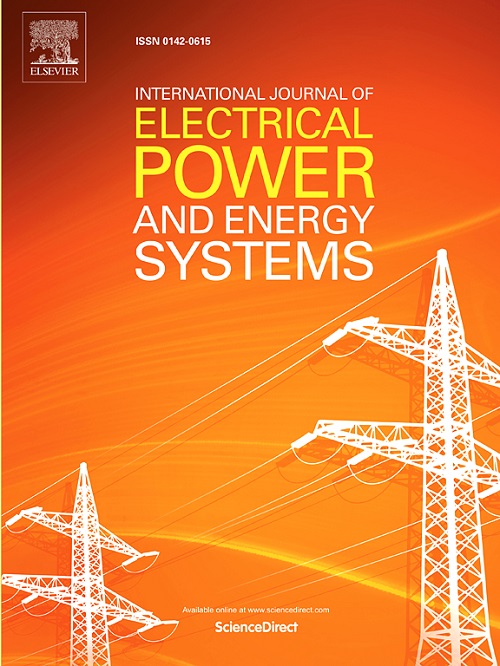Coordinated control strategy for MMC-CLCC considering AC voltage support and active power transmission
IF 5
2区 工程技术
Q1 ENGINEERING, ELECTRICAL & ELECTRONIC
International Journal of Electrical Power & Energy Systems
Pub Date : 2025-09-26
DOI:10.1016/j.ijepes.2025.111185
引用次数: 0
Abstract
- The hybrid HVDC transmission system employing the Modular Multilevel Converter (MMC) at the sending end and the Controllable Line-Commutated Converter (CLCC) at the receiving end offers advantages such as avoiding commutation failures and providing reactive power support to the sending end, thus holding promising application prospects. This paper analyzes the dynamic process of MMC and CLCC under receiving-end AC faults, as well as the power characteristics of the CLCC. It determines operational ranges of DC current, active power, and reactive power under fault conditions, and proposes a coordinated control strategy for MMC and CLCC that addresses both AC voltage support and DC power transmission. This strategy introduces reactive power sensitivity constraints to determine the reduction amount of the CLCC’s extinction angle. Meanwhile, the rectifier side calculates the maximum operating points of DC current and active power based on extinction angle command and the receiving-end AC voltage magnitude to control the DC current. Finally, two cases of three-phase short-circuit faults with different severities in the receiving-end AC system are simulated using PSCAD/EMTDC. The simulation results verify that the proposed coordinated control strategy can provide support for receiving-end AC system during fault period and ensure DC power transmission capability.
考虑交流电压支持和有功传输的MMC-CLCC协调控制策略
在发送端采用模块化多电平变换器(MMC),在接收端采用可控线路换流变换器(CLCC)的混合高压直流输电系统,具有避免换流失效和为发送端提供无功支持等优点,具有良好的应用前景。本文分析了MMC和CLCC在接收端交流故障下的动态过程,以及CLCC的功率特性。确定了故障条件下直流电流、有功功率和无功功率的运行范围,提出了MMC和CLCC的协调控制策略,既解决了交流电压支持问题,又解决了直流输电问题。该策略引入无功灵敏度约束来确定CLCC消光角的减小量。同时整流侧根据消光角指令和接收端交流电压幅值计算直流电流和有功功率的最大工作点,控制直流电流。最后,利用PSCAD/EMTDC对两例不同严重程度的接收端交流系统三相短路故障进行了仿真。仿真结果验证了所提出的协调控制策略能够在故障期间为接收端交流系统提供支持,保证直流输电能力。
本文章由计算机程序翻译,如有差异,请以英文原文为准。
求助全文
约1分钟内获得全文
求助全文
来源期刊
CiteScore
12.10
自引率
17.30%
发文量
1022
审稿时长
51 days
期刊介绍:
The journal covers theoretical developments in electrical power and energy systems and their applications. The coverage embraces: generation and network planning; reliability; long and short term operation; expert systems; neural networks; object oriented systems; system control centres; database and information systems; stock and parameter estimation; system security and adequacy; network theory, modelling and computation; small and large system dynamics; dynamic model identification; on-line control including load and switching control; protection; distribution systems; energy economics; impact of non-conventional systems; and man-machine interfaces.
As well as original research papers, the journal publishes short contributions, book reviews and conference reports. All papers are peer-reviewed by at least two referees.

 求助内容:
求助内容: 应助结果提醒方式:
应助结果提醒方式:


